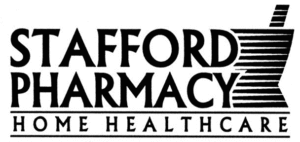Every 7 minutes, someone in Canada dies from a stroke. This number is too high as 80% of strokes can be prevented. Keep reading to learn how to decrease your risk of having a stroke.
What is a stroke?
A stroke is a disruption of blood flow within the brain. Another term for a stroke is a “brain attack”. Blood flow in the brain can be disrupted in two ways.
1) A blockage (blood clot or cholesterol build up) – an ischemic stroke
2) A bleed—a hemorrhagic stroke
What is a mini-stroke or transient ischemic attack (TIA)?
A mini-stroke or TIA is a warning that must be taken seriously. When someone has a TIA, they experience one or a number of the signs of stroke. However, these signs disappear in a few minutes or hours. This is a warning that a full blown stroke could occur within a few minutes or up to a year away.
What are the risk factors for stroke?
There are two different types of risk factors for stroke: those you can change and those you can’t. Factors you can’t change are your age and gender. As you age your risk of heart disease and stroke increases. Men over 55 and postmenopausal women are at greater risk for heart disease.
Risk Factors that you can con-trol are:
- High blood pressure (hypertension) – #1 risk factor
- High blood sugar (diabetes)
- High cholesterol
- Obesity
- Alcohol Consumption
- Lack of exercise
- Smoking
- Stress
Choosing a healthy lifestyle is key to preventing the development of heart disease and stroke. Following Canada’s food guide and getting 30 minutes of exercise a day are both ways to be heart smart. If you have been diagnosed with high blood pressure, blood sugar or cholesterol it is imperative that these conditions are tightly controlled to reduce your risk of having a stroke
Prognosis
Many stroke survivors recover after therapy and rehabilitation. However 25% are left with minor disabilities while 40% are left with moderate to severe disabilities. Long term complications of stroke include muscle weakness, pain and spasticity. These complications can drastically affect ones ability to carry out normal daily activities such as walking or getting dressed.
Treatment
There are two emergency therapies that are used to treat stroke:
- A clot busting drug called “TPA” which must be administered within 3 hours of a person experiencing a stroke.
- Surgery can be used to open up blocked arteries or to remove blood that has pooled in the case of a bleed.
Once a person is stabilized, medications to treat blood pressure, cholesterol and prevent blood clots will be administered lifelong. A stroke survivor will also undergo intensive rehabilitation to help them regain brain and muscle function.
What are the signs of a stroke?
The signs of a stroke usually come on suddenly and include one, some or all of the following:
- WEAKNESS OF MUSCLES, typically on one side of the body
- CONFUSION and DIFFICULTY SPEAKING or understanding speech
- HEADACHE that is sudden and severe
- LOSS of VISION in one or both eyes, even if temporary
- Trouble walking, DIZZINESS and lack of coordination
What should you do if you or someone you know experiences signs of a stroke?
Call 9-1-1. A stroke is a medical emergency. Like a heart attack, the faster a stroke is treated, the more likely a person is to survive. If ANY of the symptoms listed are experienced for ANY duration of time call 9-1-1. There is a 3 hour window in which treatment can be administered.
Ensure your risk of experiencing a stroke is as minimal as possible today! Ask your pharmacist or doctor today to assess your heart health or visit www.heartandstroke.com to take their online assessment.


